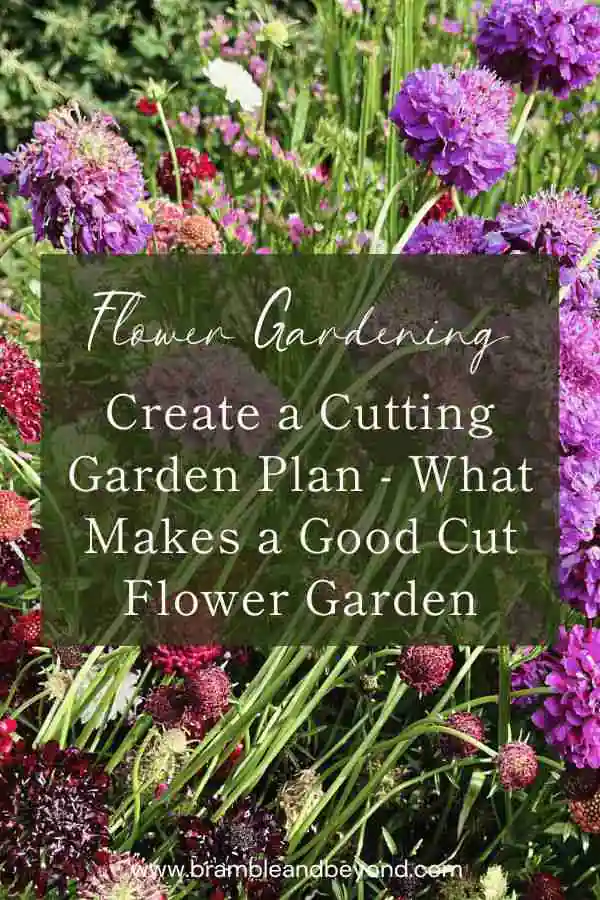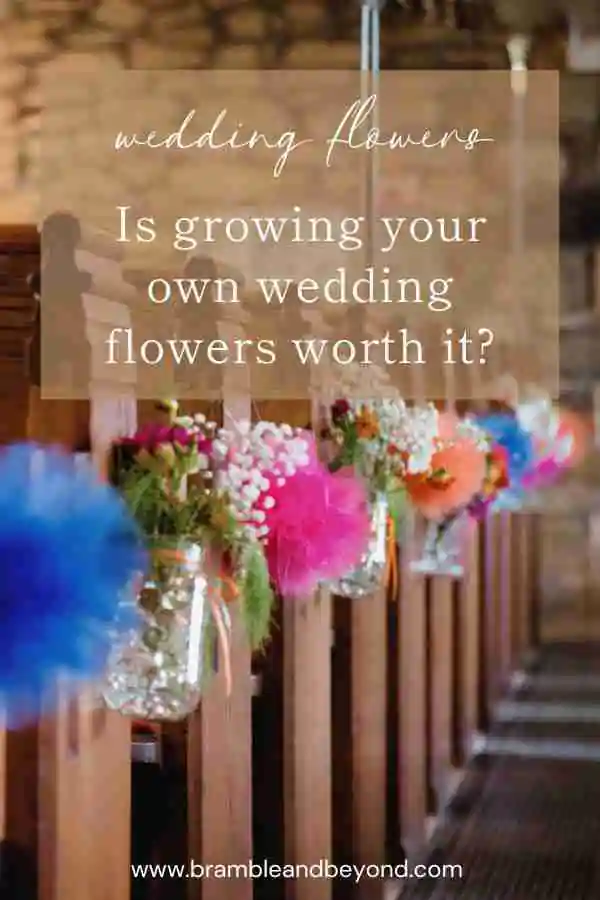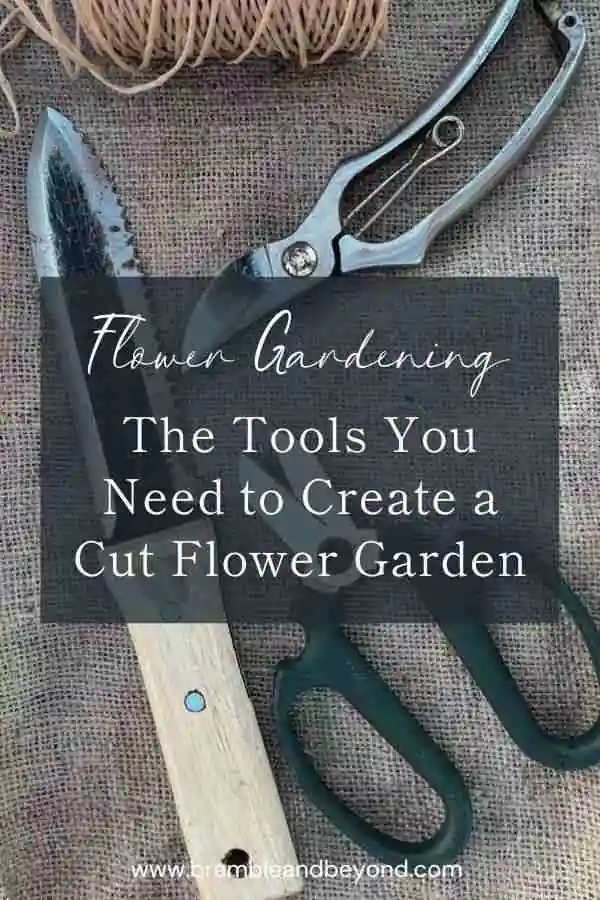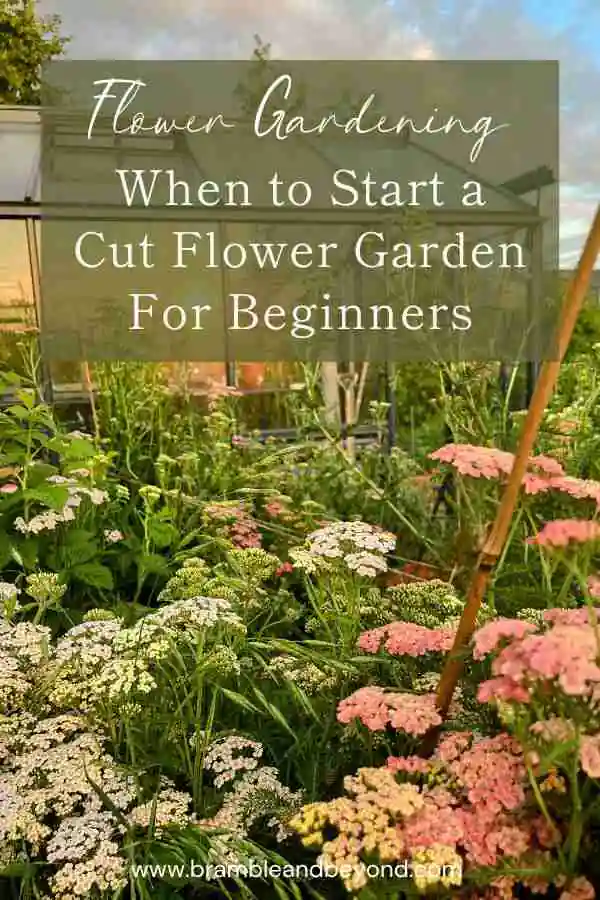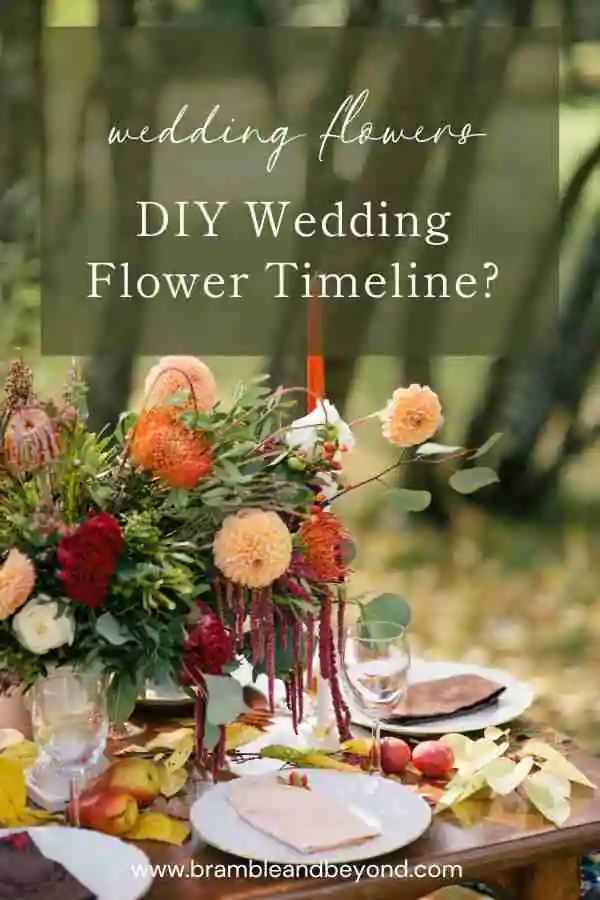Disclosure: This post may contain affiliate links, meaning I get commission if you decide to make a purchase through my links, at no cost to you. Please read my Affiliate Disclosure for more information.
If you’re anything like me, the idea of having your very own cutting garden is a dream come true. Imagine stepping into your garden and being greeted by a riot of colour, a symphony of scents, and the promise of endless bouquets to fill your home. Sounds wonderful, doesn’t it?
In this blog post, I’ll guide you through crafting your very own cutting garden plan. We’ll explore what makes a good cut flower garden, share tips on sustainable seasonal flower gardening, and provide inspiration for what to sow. So, grab your gardening gloves and let’s dig in!
What is a cutting garden plan
Generally, at least 50% of the flowers in a cutting garden are annuals, forming the main crop of any cut flower garden. However, when thinking of what to grow in your cut flower garden, think in terms of the shape, colour and texture of the flowers or plants you will need to create the flower arrangements you love.
To create bouquets that are personal to you, you will need a good balance of all the ingredients that balance shape and colours that you love throughout the season.
The options are enormous when selecting varieties of annuals, perennials and bulbs to create stunning bouquets. However, careful consideration ahead of time will ensure you have a consistent and plentiful supply of flowers to make beautiful arrangements you love.
If you need help figuring out where to start, here are a few tips on creating a cutting patch.
Grow with the seasons
How wonderful it is to embrace the rhythm of nature! Traditional floristry often overlooks this connection, choosing flowers based on design rather than seasonality.
But when you grow your own cut flowers, you get to enjoy the delightful surprises nature has to offer each week. Every season brings its own unique flowers, allowing you to create something special and reflective of the time of year. It’s like getting a warm hug from nature, even though it can sometimes be a bit challenging.
When you grow your own, you get to work with what’s at its best during harvest time. It’s like nature’s own colour palette! You’ll quickly find that the varieties and colours available at the same time naturally complement each other. This harmony gives your arrangements a sense of the garden and the season, no matter what your style is.
Choose your colour palette
Your journey to a beautiful cutting garden plan begins with choosing your colour palette. Having a clear idea of the colours you’re passionate about will help you navigate the alluring world of seed catalogues.
Don’t limit yourself to just one colour. Feel free to include pops of contrast and harmony, but do try to choose colours that blend well together. Consider the general hue of the colours you love. Are they warm or cool? Colours with the same hue will always blend well, even if they’re from opposite sides of the colour spectrum.
If you’re working with limited space, try to be selective. Including lime green or deep red flowers or foliage can add depth to any arrangement and generally blend well with all colour palettes. They’re like the secret ingredient in a delicious recipe!
I like to take a theme and incorporate colours that works well within that. For example peach colours are very popular at the moment so I like to use a theme called ‘Peach Melba’. This can encompass a variety of peach, yellow, orange colours but brings in some pinks to soften the look. In spring, this could be bright fresh colours that gently soften as we move through the seasonal calendar.
Some of the pinks can then be used in my next theme of ‘Blush & Berries’. This is a traditional colour mix that is always in fashion. Plus some of the burgundy colours will work well with the ‘Peach Melba when it starts to become autumn. In doing this, while I’m working with two separate colour schemes, some of the ingredients will work well in each scheme, making them doubly useful.
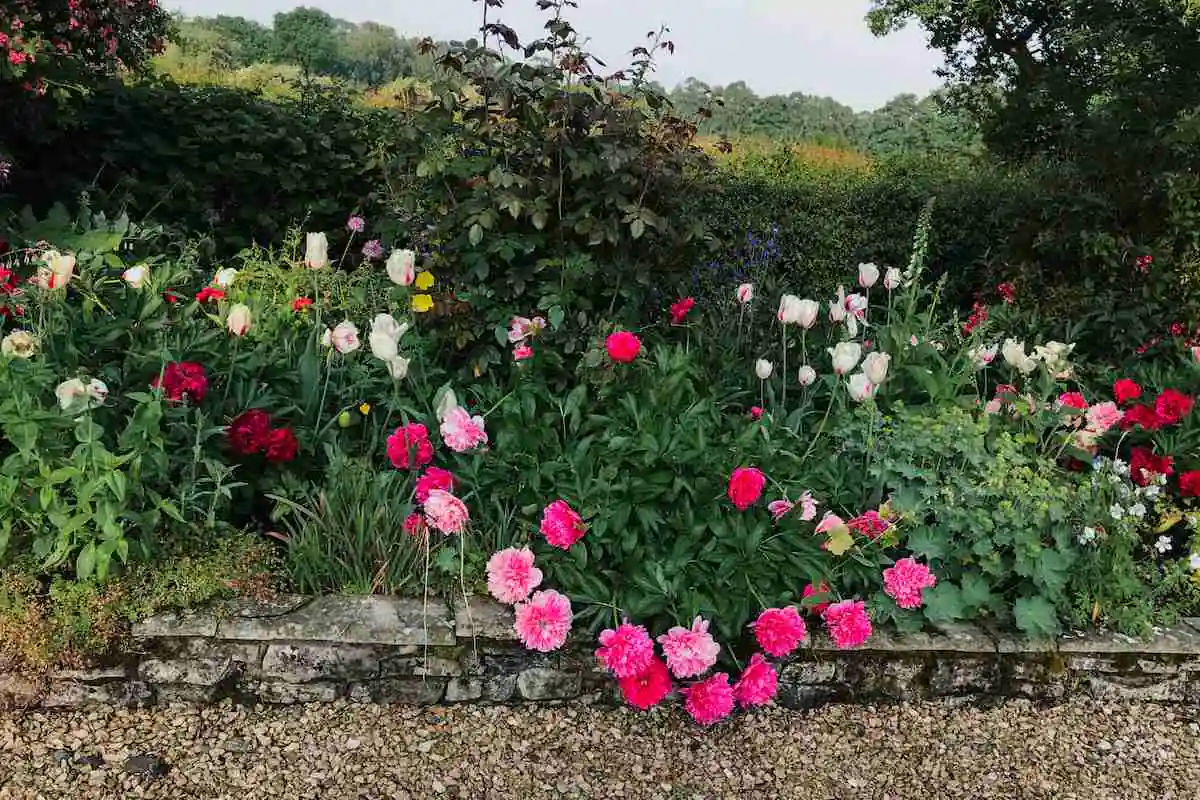
Floral design basics
Creating beautiful bouquets is like conducting a symphony. You need to consider the 3 Fs that form the basis of good floristry – Foliage, Filler and Focal flowers.
A well-composed bouquet typically comprises a third of focal flowers and two-thirds of filler and foliage. One common beginner mistake is to choose only pretty blooms without enough greenery to accompany them throughout the seasons.
The focal flower is the star of the show, the one that first catches your eye. Just a few of these can make a stunning bouquet. The filler flowers add volume to the arrangement, filling the spaces between the larger blooms and bringing the design together. The fillers generally have smaller flowers or bring in another colour dimension, for example, a different shade of green or scent.
The foliage is generally there to provide the structure. It provides the framework for all your other blooms to sit. For the most part, this will comprise of foliage from woody stems.
Shapes and textures
Creating a mixed arrangement is like painting a masterpiece. It’s not just about the flower head itself but also the overall form of that flower. This will help you create a well-balanced display of colour, texture and shape.
Most arrangements include the following :
Round shapes – These are often focal flowers like double tulips, ranunculus, peonies, roses, dahlias and chrysanthemums.
Spires or spikes – These are often supporting flowers to the focal flower. They add height and drama. Examples include lupins, foxgloves and antirrhinums.
Texture – These are often filler flowers and add depth or lightness to the arrangement. Flowers such as astrantia, achillea, daucus or ammi majus add an extra element to a bouquet.
Airy elements – These add movement and magic to an arrangement. They’re often small, floaty flowers on long thin stems. Flowers like aquilegia or grasses are perfect for this.
How to get the mix right
Planning is key to having the right materials available when you need them. Having some fail-safe bouquet recipes is also a huge help.
Before buying any seeds or plants, look through Pinterest, Instagram, or any books or magazines that have examples of flower arrangements you would like to replicate. Then try and identify the different elements in the arrangement. For example, what is the focal flower, what is the filler and what is foliage? What are the different shapes and textures?
When planning, start with your focal flowers and note when they will be in flower. Then decide on the other ingredients you know will work well with them that will be in flower simultaneously. For example, I sow a batch of hardy annuals such as ammi majus, daucus, honeywort and nigella in the autumn so that they will be in flower to mix with the last of the tulips and the start of the peonies, lupins and lilac. At the same time, I’ll be able to pick aquilegia or feverfew (which self-seeds all over my garden) and some early mint.
If you are ready to buy your seeds I have all of the easy cut flower seeds to grow in my shop. Shop Now
What do you grow in a cutting garden?
Knowing what flowers you like is the first step in creating a beautiful cut flower garden that will last throughout the season.
A cut flower bed can include anything you want in your flower arrangements. This can consist of shrubs, bulbs, herbs, perennials, and, of course, the staple of a cutting patch, annuals. The number and variety will depend on your taste and your available time and space.
If you are short on time, taking advantage of shrubs, herbs and perennials will mean you save precious time by not having to germinate and nurture seeds. However, you will likely limit the textures and colours you have available to you. It will also shorten your cutting season. But once you have your staples, it will mean you have something that only improves year after year.
Annuals will be your go-to plant if you want more variety and quick results. Most annual seeds germinate in spring and flower about 12 weeks later. If you repeat sow the same seeds every few weeks, you can have the same flowers consistently in bloom from May to September.
In addition to annual seeds, perennials and shrubs, you can add bulbs and tubers into the mix. These help extend your season. Bulbs are usually the first to flower. However, some tubers, for example, Dahlias, can flower through to the first frosts.
Mixing all the plant types in the following sections will give you a rich choice of flowers from April to November.
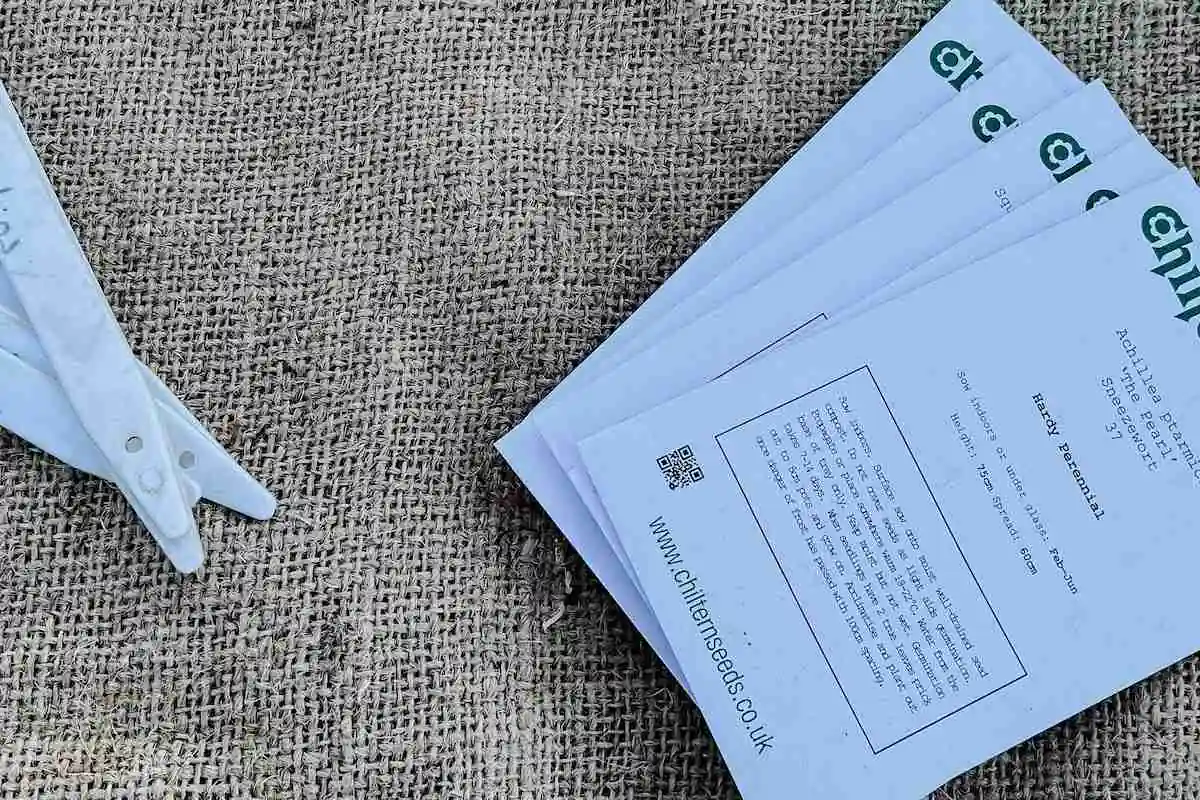
Annuals
Annuals will provide masses of colour and flowers for your cutting garden. They are the most abundant plant group, giving immediate satisfaction to the grower. If you’re looking for quick results, then annuals are for you.
As the name suggests, annuals need to be sown every year as they grow, flower and set seed in one growing season. Often over 50% of a cut flower garden comprises of annuals.
Annuals fall into two types: Hardy and half-hardy. These categories relate to how well the plant will survive in the cold.
All annuals can be grown in succession throughout the season to provide a continuous supply of flowers. Although ensure your last sowing will flower before the first frosts, otherwise you will be wasting your time and seed.
Hardy Annuals
Hardy annuals are frost tolerant and can be sown and left in the ground in late summer/ early autumn for an early flowering the following year. They can also be sown under cover in late winter/ early spring for a slightly later flowering.
Here are some easy, hardy annuals for you to try:
Half-hardy Annuals
Half-hardy annuals cannot tolerate frost, or low temperatures, at all. So they are started under cover in spring or sown outdoors once the risk of frost is passed.
Here are some easy, half-hardy annuals for you to try:
- Cosmos
- Strawflower
- Rudbeckia
- Zinnia
- Sunflowers
- Nicotiana
- Phlox drummondii
- Amaranthus
Biennials
Biennials have a two-season lifecycle. They are sown one year to flower the next, then set seed and are finished. The low winter temperature induces the flowering stems.
Biennials are good for filling the June gap when your bulbs finish and before your annuals/perennials start in earnest.
Good biennials to include in your cutting patch are:
- Campanula
- Foxglove
- Honesty
- Orlaya
- Sweet Rocket
- Sweet William
If you’re looking to buy seeds, I have seeds for most of the biennials mentioned above in my shop.
Bulbs, corms and tubers
Bulbs and tubers provide a wide variety of plants for cutting material. Most of these need to be lifted and replanted yearly, although some can remain in the ground.
Many spring flowers grow from bulbs and corms. Some examples are allium, daffodils, tulips, anemones, ranunculus and gladiolus.
The most significant tuber plant family are dahlias. These have become very popular in recent years, and for a good reason. There is a dahlia to suit all tastes, and it will continue flowering until the first frosts.
Herbaceous perennials
Herbaceous perennials form the backbone of the cutting garden. They live for many years and increase in size each year.
You grow perennials for reliability as they flower at the same time each year. They can be easily purchased as small plants. Some can even be grown from seed, but it may take a few years before they flower sufficiently for you to cut the stems. Over winter, the top growth will die back to ground level, and new shoots will appear in spring.
Adding perennials to your borders to supplement your flower garden is a great idea.
Some great ones to try are achillea, alchemilla mollis, astrantia, delphiniums, geum, lupins, mint, peony, lavender and rosemary.
Trees and shrubs
Both trees and shrubs (also known as woody perennials) provide a wealth of cutting material throughout the year.
Pruning at specific times of the year will help to produce long, straight stems that are useful for flower arranging. The time to prune will depend on whether the plant produces flowers on new growth or the previous year’s growth.
Some good trees and shrubs to have in your garden are brachyglottis, eucalyptus, physocarpus, pittosporum, rose, willow, syringa (lilac) and viburnum.
Making a beautiful cutting garden plan
To create the flower arrangements or dry flower projects you want, ensure you include a variety of ingredients you need for your cut flower garden in your cutting garden plan.
Above everything else, make sure you love what you grow. That way, no matter what is in bloom, you will enjoy picking it to bring into the house.
Learn more about how to start and grow a cut flower garden in this series of blog posts:
- The 9 Benefits of Starting a Cutting Garden
- How to Start a Cut Flower Garden – 7 easy steps
- What’s the Best Cutting Garden Layout: How Much Space Do You Need?
- The Tools You Need to Create a Cut Flower Garden
- Cutting Garden Plan: What Makes a Good Cut Flower Garden
- When to Start a Cut Flower Garden For Beginners
- How to Grow Flowers For Cutting: Flower Bed Maintenance
- Flower Bed Maintenance: A Guide To Watering
And if you want to do it with the minimum of trouble find out the mistakes I made in starting my flower patch.

